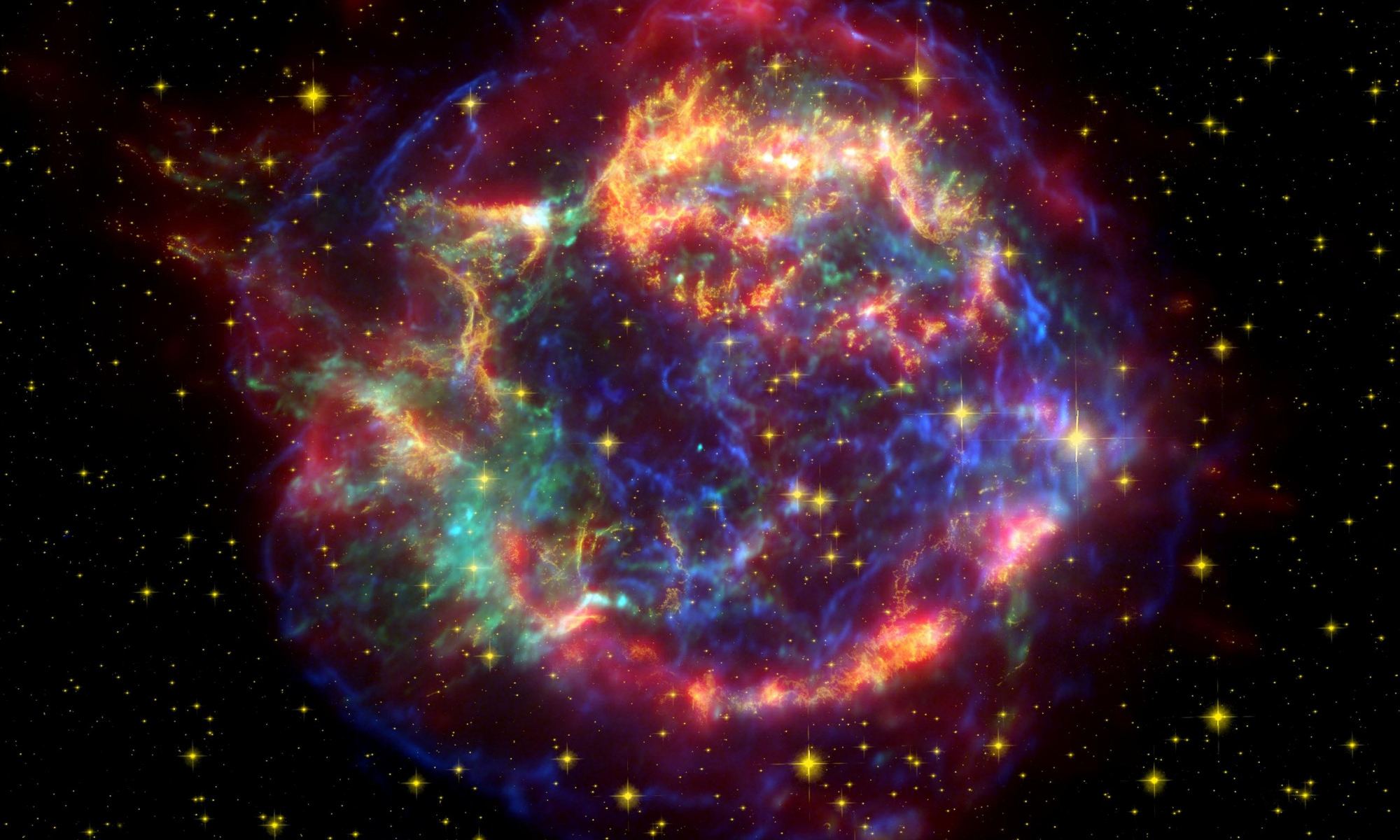Cassiopeia A is the remnant of a supernova that exploded 11,000 light-years away. The light from the exploding star likely reached Earth around 1670 (only a couple of years before Newton invented the reflecting telescope.) But there are no records of it because the optical light didn’t reach Earth.
The Cass A nebula ripples with energy and light from the ancient explosion and is one of the most-studied objects in deep space. It’s an expanding gas shell blasted into space when its progenitor star exploded.
But Cass A isn’t expanding evenly, and astronomers think they know why.
A supernova explosion is one of the most cataclysmic events in the Universe. The explosion releases an enormous amount of energy, blasting a gas shell into space at high velocities. Supernovae can send several solar masses of material into space at velocities reaching ten percent of the speed of light. The explosion sends an expanding shock wave into space, where it slams into the interstellar medium (ISM) and sweeps up more material. Cass A’s supernova explosion left a neutron star behind, ensconced in the center of the expanding cloud, now about 16 light-years across. The cloud of gas is superheated to around 30 million degrees Celsius and still glowing with the energy of the explosion.
A new study shows that Cass A’s inner nebula is lopsided and not expanding evenly. The Astrophysical Journal will publish the study titled “The Forward and Reverse shock dynamics of Cassiopeia A.” The lead author is Jacco Vink, an associate professor at the University of Amsterdam.
A supernova explosion is the final act in a drama that started long before the explosion. As massive stars age, they run out of hydrogen. This disrupts fusion, causing them to pulse several times as they strain to reach equilibrium between outward and inward pressures. Each pulse sends matter outward into interstellar space.
The Cass A nebula has discrete expanding rings. Some of the material in the nebula was cast off from the star in the pulses preceding the supernova explosion, and that material is contained in the outer ring. Cass A also has both forward and reverse shock waves. The reverse shock waves are matter from the explosion slamming into the ISM and bouncing inwards towards Cass A’s center.
Cass A also contains lumps of denser material called high-density knots and two jet-like structures opposite each other. There are also ring-like features that the authors of the study describe as “peculiar morphological features.” These features are likely bubbles of radioactive material pushing aside other material as they expand. “The goal is to both understand the dynamics of the forward shock and the reverse shock and the northeastern jet,” the authors explain in their paper.
A lot is going on in Cass A, and even a quick look at the multi-wavelength image of the nebula makes it clear.
![This coloured image of Cassiopeia A based on data from the space telescopes Hubble, Spitzer and Chandra. You don't need to be an astronomer to see that there's a lot going on in this complex object. Image Credit: NASA/JPL-Caltech [via Wikimedia]](https://www.universetoday.com/wp-content/uploads/2022/04/Cassiopeia_A-credit-NASA-JPL-Caltech-1024x779.jpg)
This study is based on 19 years of Chandra X-ray observations of Cass A. Those observations show that the western side of Cass A’s inner regions isn’t expanding. Instead, those regions are moving inward. Observations also show that the outer shock wave accelerates in the west rather than decelerates.
“The reverse shock is moving outward in the frame of the observer in the eastern part of the SNR <supernova remnant>…” the paper says. But the expansion rate “… is lower between position angles of 190? and 310?, with negative expansion rates for the range of 260?–300?: here the reverse shock moves toward the center,” the authors explain. Note that astronomers call the right side of the image the west.

This is very unusual for supernova remnants. Astronomers have observed and modelled SNRs extensively. “The inward motion of the reverse shock in the western part does not agree with the evolutionary model for an SNR expanding into a dense wind at less than 1000 yr,” the authors write. The authors say there are a couple of explanations for the inward motion of the reverse shock.
“The backward movement in the west can mean two things,” said lead author Vink. “Either there is a hole somewhere, a kind of vacuum, in the supernova material, causing the hot shell to suddenly move inwards locally. Or the nebula has collided with something.”
The team’s models showed that a collision was most likely. Computer models of a collision showed that the shock wave would first decrease in speed after the collision, then accelerate again. “Exactly as we have measured,” said Vink.

dashed circle–inside the circle indicates a motion toward the interior. Image Credit: Vink et al. 2022
“The early dynamical evolution of supernova remnants (SNRs) is as much determined by the density structure of the progenitor’s circumstellar medium (CSM) as by the velocity distribution of the supernova (SN) ejecta,” the paper states.
Cass A’s morphology seems to make that clear. Cass A’s reverse shock wave appears to have collided with a dense region of the SNR’s ejecta, bouncing back toward the middle and giving Cass A a misshapen appearance.
More:
- Press Release: Ejection nebula of supernova Cassiopeia A does not expand evenly
- Published Research: The forward and reverse shock dynamics of Cassiopeia A
- Universe Today: The First Image From NASA’s new X-ray Observatory

